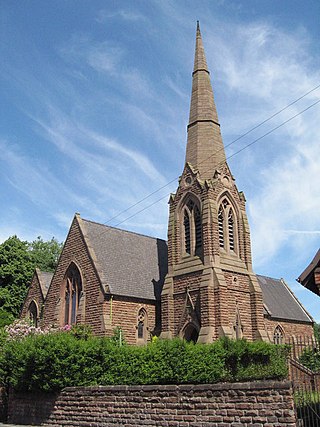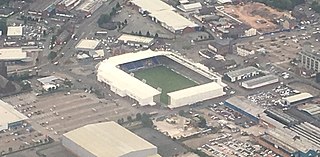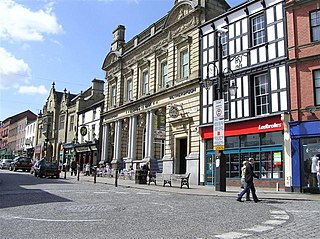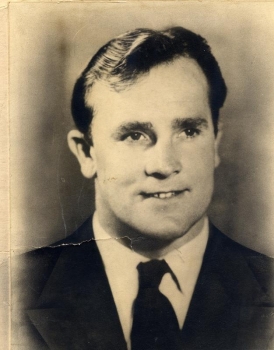
The River Mersey is a major river in North West England. Its name derives from Old English and means "boundary river", possibly referring to its having been a border between the ancient kingdoms of Mercia and Northumbria. For centuries it has formed part of the boundary between the historic counties of Lancashire and Cheshire.

Runcorn is an industrial town and cargo port in the Borough of Halton, Cheshire, England. Its population in 2021 was 62,100. Runcorn is on the southern bank of the River Mersey, where the estuary narrows to form the Runcorn Gap. It lies on the southern shore of the River Mersey 15 miles upstream from the port of Liverpool.

Latchford is a suburb and electoral ward of Warrington, in the ceremonial county of Cheshire, England. It is around one mile south-east of Warrington town centre and has a total resident population of 7,856.

Great Sankey is a civil parish in the Borough of Warrington, Cheshire, England. It is 2 miles (3.2 km) west of Warrington town centre and had a population of 24,211 in 2001 Census.

Padgate is a suburb of the town of Warrington, in the civil parish of Poulton-with-Fearnhead, in the Warrington district, in the ceremonial county of Cheshire, England.

Stockton Heath is a civil parish and suburb of Warrington, in the Borough of Warrington, Cheshire, England. It is located to the north of the Bridgewater Canal and to the south of the Manchester Ship Canal, which divides Stockton Heath from Latchford and north Warrington. It has a total resident population of 6,396.

The Halliwell Jones Stadium is a rugby league stadium in Warrington, England, which is the home ground of the Warrington Wolves. It has also staged Challenge Cup semi-finals, the European Nations Final, the National League Grand Finals' Day, two games of the 2013 Rugby League World Cup and four games of the 2021 Rugby League World Cup.
Wilderspool is a district of Warrington, Cheshire, near the town centre. It consists of Wilderspool Causeway and the streets coming off it, the limits being the River Mersey into Stockton Heath, Bridgefoot, and Centre Park. The district incorporates Priestley College, Wilderspool Stadium, Wilderspool depot, a Morrisons supermarket, and the Riverside Retail Park. Excavations in the area have shown Roman settlement, and there are parts of a walled town with evidence of industrial activity.

Burtonwood is a village in the civil parish of Burtonwood and Westbrook, in the Borough of Warrington, Cheshire, England. Within the boundaries of the historic county of Lancashire, the name Burtonwood is known worldwide as the location of the former RAF Station Burtonwood military camp. Burtonwood village itself is a few miles away from the site of the former station. The civil parish also includes Westbrook, which is a council ward and suburb of Warrington. According to the 2001 census, the population of the entire civil parish was 11,265.

The St Helens and Runcorn Gap Railway was an early railway line owned by a company of the same name in Lancashire, England, which opened in 1833. It was later known as St Helens Railway. It ran originally from the town of St Helens to the area which would later develop into the town of Widnes. Branches were opened to Garston, Warrington and Rainford. The company was taken over by the London and North Western Railway in 1864. The line from St Helens to Widnes and the branch to Rainford are now closed, the latter terminating at the Pilkington Glass' Cowley Hill works siding near Gerard's Bridge, but part of the lines to Garston and to Warrington are still in operation.
There are various modes of transport available in Warrington.
De Vere is a hotels and leisure business, which until the 1990s was a brewing company known as Greenall's. It used to be listed on the London Stock Exchange and was once a constituent of the FTSE 100 Index.

Widnes is an industrial town in the Borough of Halton, Cheshire, England, which at the 2021 census had a population of 62,400.

Wrexham city centre is the administrative, cultural and historic city centre of Wrexham, in North Wales and is the area enclosed by the inner ring road of the city. It is the largest shopping area in north and mid Wales, and the administrative centre of Wrexham County Borough. Many of its streets are pedestrianised.

Martin Ryan was an English professional rugby league footballer who played in the 1940s and 1950s. He played at representative level for Great Britain and England, and at club level for Wigan, primarily at fullback, or centre. He also made five guest appearances for St Helens in 1943, plus one appearance for Leigh in 1955.

The Borough of Warrington is a unitary authority area with borough status in the ceremonial county of Cheshire, England. The borough is centred around the town of Warrington, and extends out into outlying villages of Lymm and Great Sankey and the town of Birchwood.

Warrington is an industrial town in the borough of the same name in Cheshire, England. The town sits on the banks of the River Mersey and is historically part of Lancashire. It is 19 miles (31 km) east of Liverpool, and 18 miles (29 km) west of Manchester.
Peter Greenall was a British brewer and Conservative politician.














